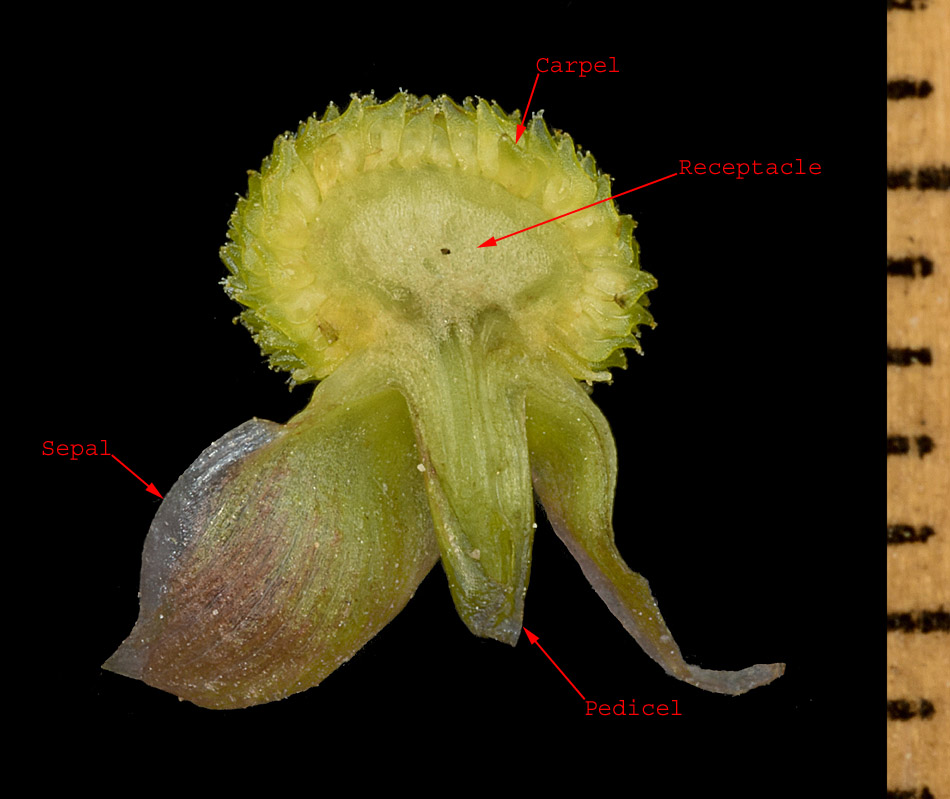Sagittaria cuneata

Arum-Leaved Arrowhead
Female Flower, Longitudinal Section
4.3
Miles North on Veillardville Road, West of Hudson Bay
16-July-2024
Note the carpels are spirally arranged on a convex
receptacle.
The following items are taken from keys in Rushes,
Bulrushes & Pondweeds plus the remaining Monocots of Saskatchewan by Vernon L.
Harms, Anna L. Leighton and Mary A. Vetter.
 |
Sagittaria: Answers to key questions
leading to this genus.
 | Emergent leaves mostly sagittate or hastate;
inflorescences usually racemes with whorls of flowers, rarely panicles;
pistils and achenes spirally arranged on convex receptacles, very
numerous; flowers imperfect; stamens 7-30; NOT [Emergent leaves
linear-lanceolate or elliptic to ovate; inflorescences panicles with
whorls of branches; pistils and achenes arranged in a single ring around
margin of flat receptacles, usually fewer than 20; flowers perfect;
stamens few, 6-9]
|
|
 |
Cuneata: Answers to key questions
leading to this species (in genus Sagittaria).
 | Pistillate flowers distinctly pedicellate;
fruiting pedicels 5-35 mm long; achene beaks if curved, then <0.8 mm
long; filaments glabrous; NOT [Pistillate flowers sessile to subsessile;
fruiting pedicels absent; achene beaks recurved, 0.8-1.4 mm long;
filaments pubescent to tomentulose] |
 | Achene beaks either horizontal and 1-2 mm long,
or erect and immeasurably short (<= 0.4 mm long); fruiting heads
<= 17 mm wide (in our specimens < 15 mm wide); inflorescence
bracts delicate to membranous; leaves emergent, floating or submersed;
NOT [Achene beaks ascending apically, 0.4-1.7 mm long; fruiting heads
(12) 15-25 mm wide; inflorescence bracts firm; leaves emergent] |
 | Achene beaks erect, 0.1-0.4 mm long; inflorescence bracts usually long and narrow
(up to 40 mm long and lance-attenuate or acute); leaves emergent,
floating or submersed with submersed leaves often linear with phyllodial
petioles; NOT [Achene beaks horizontal,1-2 mm long; inflorescence bracts
usually short and wide (3-8 (ours to 10) mm long and elliptic to
lanceolate); leaves usually emergent] |
|